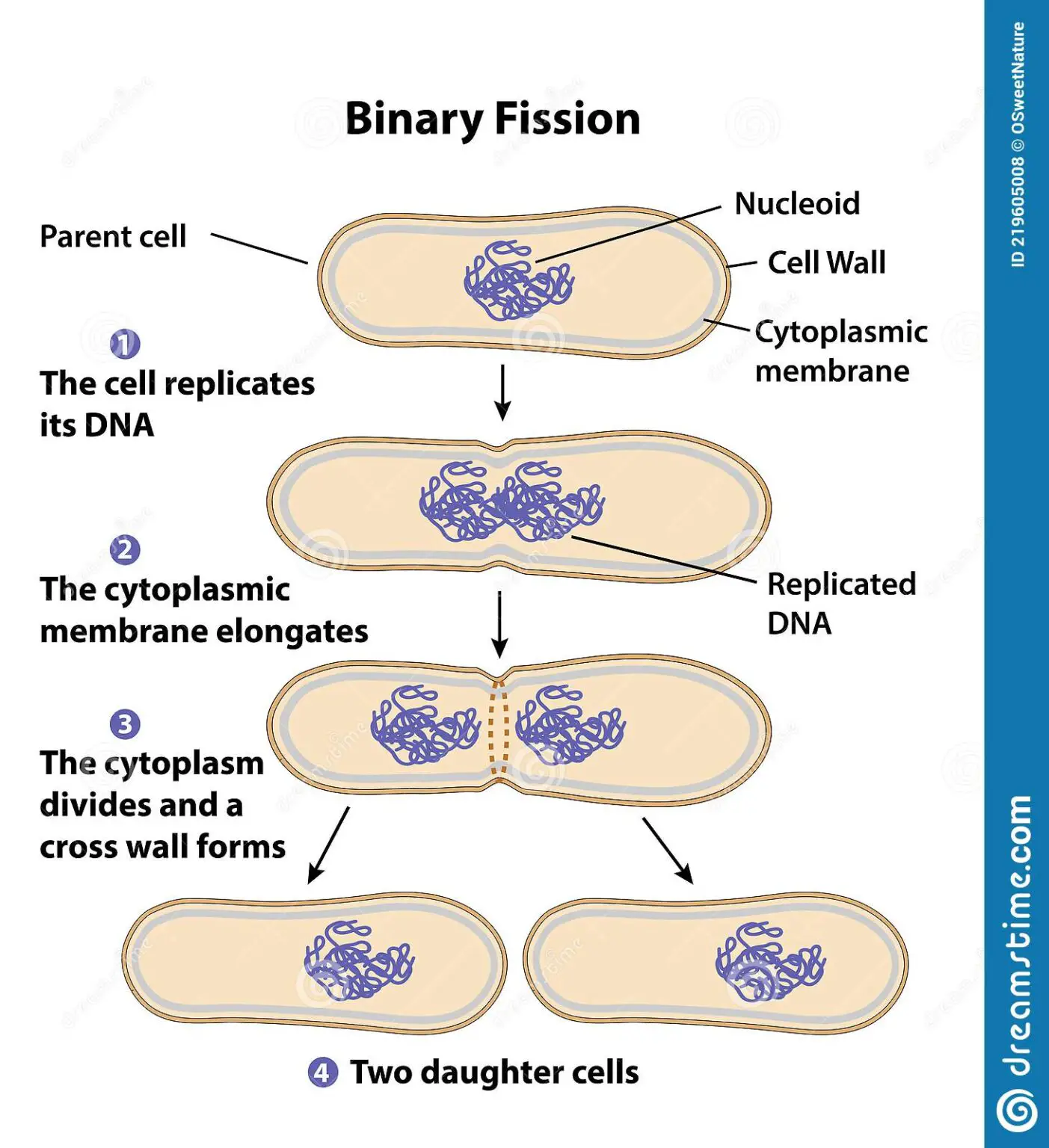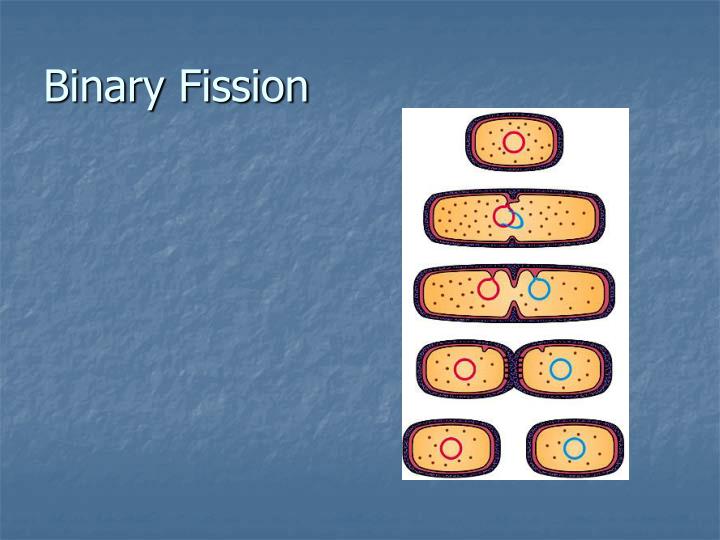
:max_bytes(150000):strip_icc()/binary-fission-71238877-5b29172c3037130036863713.jpg)
The most commonly known prokaryotes are bacteria. These provide further cell functions, such as protein-encoding. The cytoplasm generally contains some ribosomes, and there may be an additional DNA molecule present called a plasmid.

Usually, this is just one chromosome that is circular in shape, although we have found a few prokaryotes containing two chromosomes, and recent studies have even found some containing as many as four. The membranes of prokaryotic cells are composed of phospholipids that line up to form a semi-permeable barrier around the cytoplasm that holds the DNA. They are lacking in a noticeable nucleus and organelles, which is what distinguishes them from eukaryotes.
#Example of binary fission skin#
In fact, prokaryotic bacteria live on the skin and in the body as part of the human microbiota. This includes hot springs, swamps, and even inside the guts of mammals. Most prokaryotes are considered to be extremophiles, which means they can survive and flourish in various environmental extremities. They are the most primitive forms of early life that exist on earth and can be found almost everywhere.

Prokaryotes are simple, unicellular organisms. Most notably, prokaryotes have a sort of free-floating genetic material, while eukaryotes contain theirs within a distinct nucleus.

There are two main classifications for all cells on earth: prokaryotes and eukaryotes. Prokaryotes and Eukaryotes: A Quick Review It is the primary method seen in prokaryotes to reproduce, but it has also been observed in the duplication of organelles in eukaryotes. It is similar to mitosis however, the process is much simpler and faster. It is believed this kind of fission is the underlying reason for speciation.īinary fission is an asexual process through which unicellular organisms can quickly reproduce and carry on their genes. An example of such fission could be migration. Population fission refers to a single population spitting off to a different location.Clonal fragmentation is when multicellular organisms split into fragments that each develop into independent and functioning clones of the original.Plasmotomy involves a multinucleate parent cell that produces multinucleate daughter cells.There are three other types of fission we see in organisms, which are plasmotomy, clonal fragmentation, and population fission. Organism achieves bio-indefinite mortality during the processĬommonly seen occurring in bacteria and ArchaeaĬommonly seen occurring in protista (protozoans and algae) Protective cyst is not formed around the organism Parent nucleus divides into many parts as part of mitosis This table gives you a quick comparison of these two common types of fission. Besides, multiple fission works to help grow or repair an organism, whereas binary fission is primarily a method of reproduction to expand the species. However, when division results in only two copies that are identical, it is binary fission. Video can’t be loaded because JavaScript is disabled: Colpoda Reproduction, multiple fission, single cell creating 4 daughter cells, amazing!!! () When the organism divides into more than two parts that resemble the original, it is multiple fission. The main difference between binary fission and multiple fission is in the number of daughter cells that are reproduced in the process. Both are considered methods in asexual reproduction, and each process has a single parent cell that replicates into daughter cells, which can then grow into independent organisms. Multiple Fissionīoth binary and multiple fissions are seen in bacteria. While there are a few types of fission, the main two are binary fission and multiple fission. These genetic reproductions of the original organism go on to survive and reproduce independently. The original “parent” cell will copy its DNA and then form a wall-like structure to split into “daughter” cells. Whenever a single-celled or unicellular organism divides into two or more parts, they are capable of regenerating into independent organisms that replicate the original organism. It will also discuss the evolution of binary fission as it relates to alternate cell division systems within various organisms. In this article, a general overview of binary fission will be presented as well as an in-depth look into some of the genetic machinery required for binary fission to occur.


 0 kommentar(er)
0 kommentar(er)
